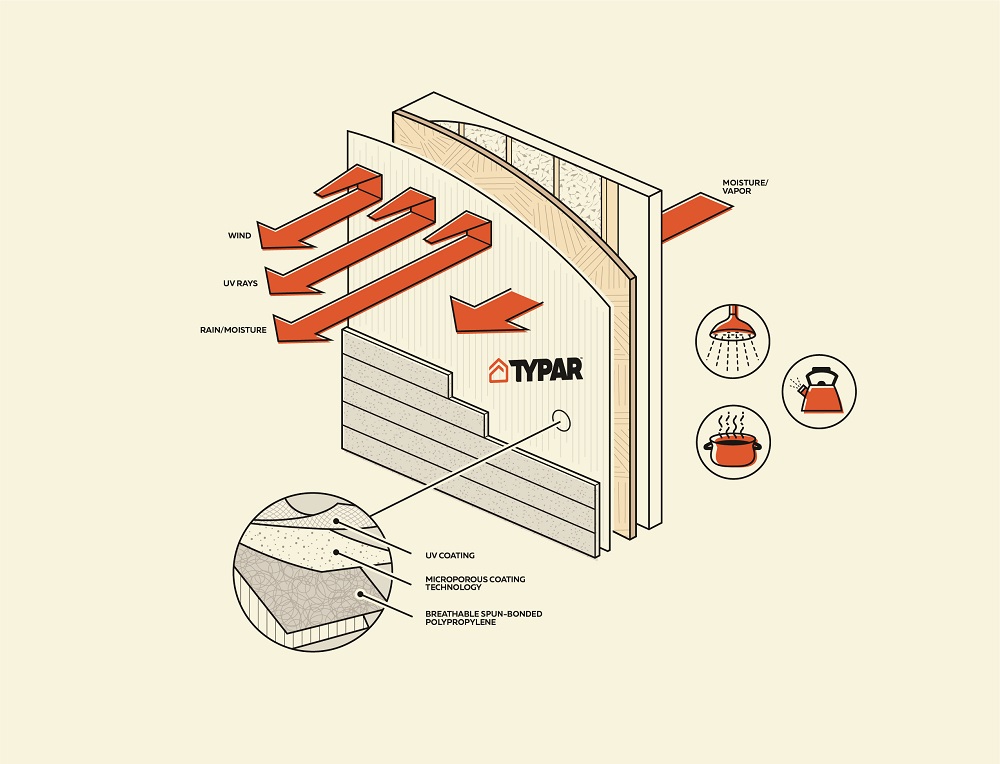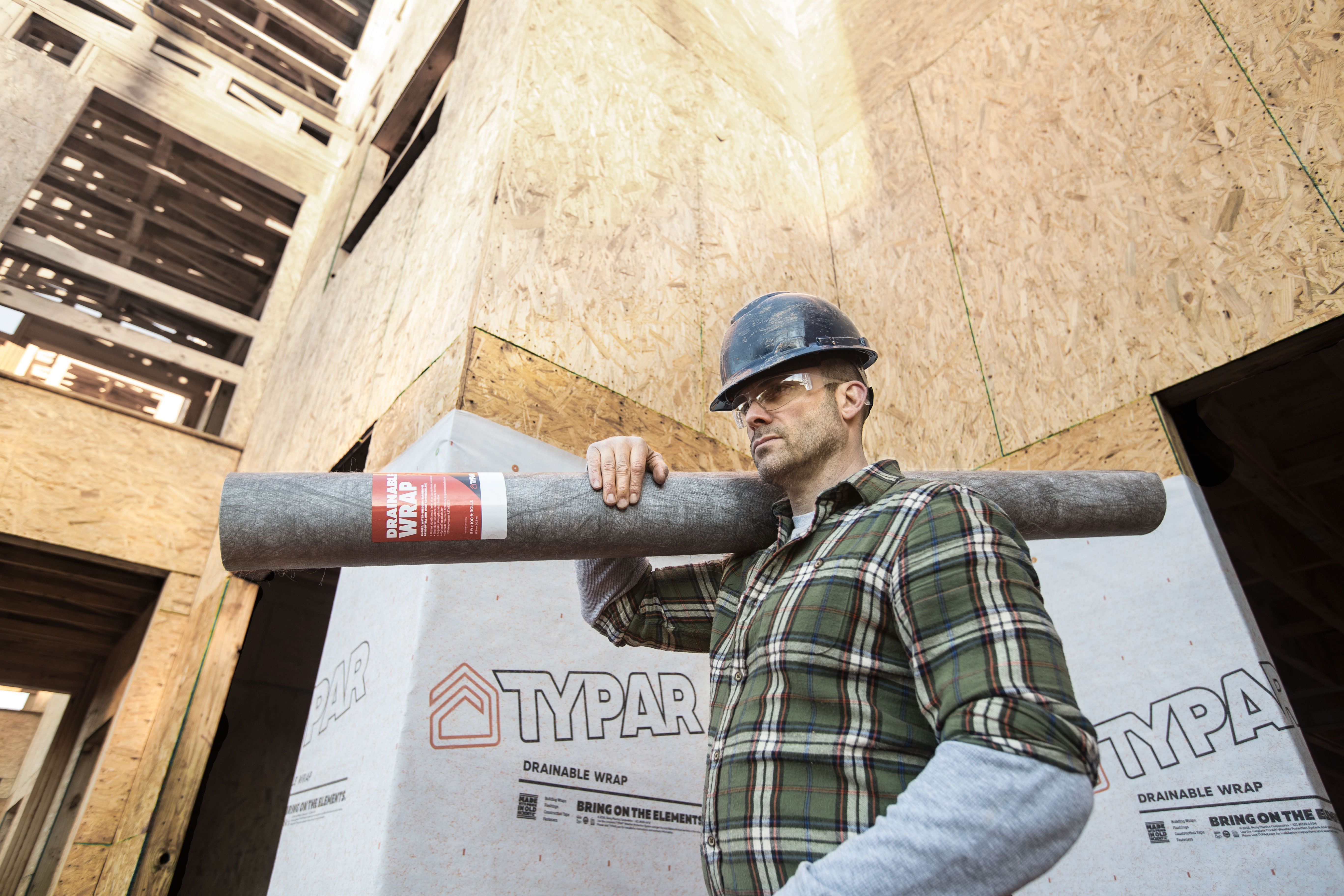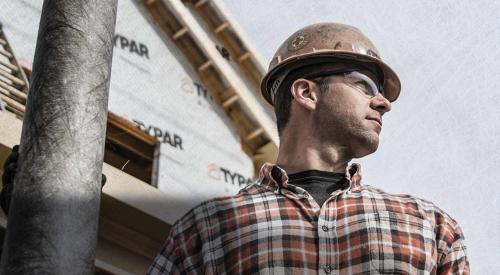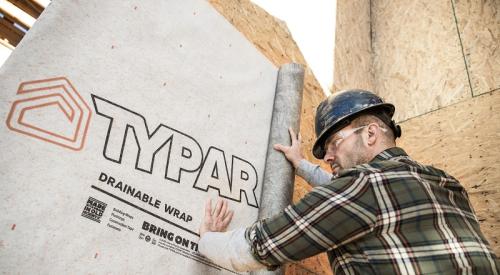While there are a variety of materials on the market aimed at increasing energy efficiency, few are as effective as selecting the right weather resistant barrier, also known as a building wrap. As part of the air barrier assembly, a building wrap can reduce drafts, increase occupant comfort and reduce energy use by decreasing the amount of non-conditioned air entering and exiting conditioned wall cavities. In fact, some studies have suggested air leakage could account for approximately 40 percent of heating energy for older offices in cold climates. In homes, infiltration typically accounts for 25 percent or more of heating and cooling energy consumption.
An air barrier is defined as a material or system of materials designed to control airflow between conditioned and unconditioned spaces. It serves as the primary air enclosure boundary separating indoor and outdoor air. Air barriers also typically define the building enclosure’s pressure boundary.

Numerous materials can achieve the ASTM requirements for air leakage, but this does not necessarily mean the individual materials will perform in the field once installed as part of a system. Will the material be able to hold up to the rigors of the jobsite and installation? Is it compatible with the other accessories, such as flashings and tapes, that comprise the rest of the system? After all, an air barrier’s performance is defined by its weakest link–and it only takes one tear or unsealed connection to compromise the entire system’s integrity.
Plastic building wraps are typically either woven or nonwoven—an important difference when it comes to specifying an air barrier. Woven polypropylene with slit-film perforated coating typically offers two months of UV resistance, but most types do not meet ASTM requirements for air-barrier materials and are not surfactant-resistant. That said, spun-bonded polypropylene with a microporous coating, on the other hand, often meets ASTM requirements set for air barriers, is resistant to surfactant chemicals, and offers six months UV exposure resistance. Depending on the type of cladding used and how long the wrap will be exposed to the elements, these additional durability benefits may be important.

Proper installation and compatibility of each component of the building enclosure is critical for an air barrier system to work as intended, and TYPAR is the only brand that offers a complete Weather Protection System comprised of high-performance building wraps, tapes, flashings and accessories—all designed to work together to provide ultimate weather protection. To back it up, TYPAR offers the industry’s leading lifetime limited warranty for all system components and labor when installed as a complete system.
Approaching air barriers from a holistic view and evaluating the entire system—rather than just an individual material—results in a tighter and far more durable enclosure that can stand the test of time.
Author Bio:

Bijan Mansouri is the technical manager at TYPAR Construction Products. He has been with Berry Plastics for more than 25 years working in different technical capacities. He is responsible for Building code requirements, designing and development of new construction products, training builders and architects on application of new and existing products and creating and education on the proper practice and installation of building envelope. He can be reached at bijanmansouri@berryglobal.com.













